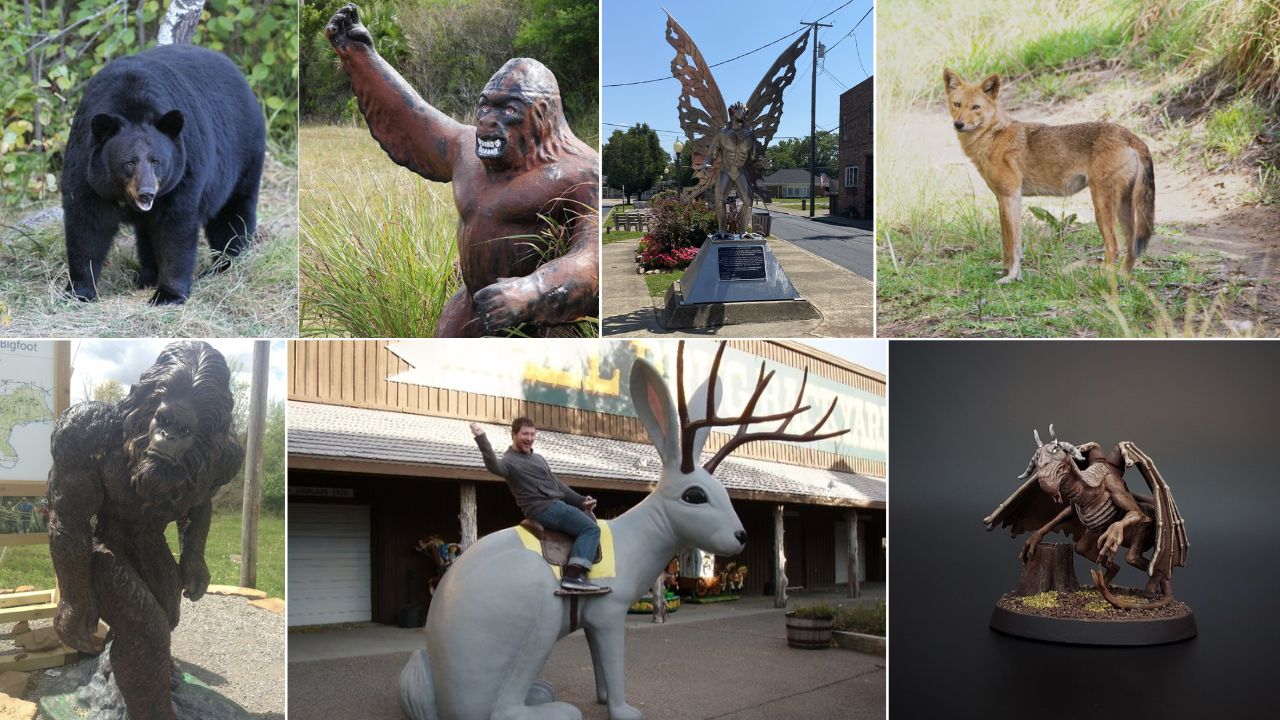American legends often start with real animals seen in bad light or from far away. Newspapers, pranks, and fear did the rest. Scientists point to bears that stand upright, cranes with red eye patches, and giant sturgeon that surface like monsters. This gallery pairs ten famous creatures with likely animal sources and quick facts teens can verify. The goal is to show how biology, weather, and night vision can turn ordinary wildlife into a campfire story that spreads fast. Knowing the animal match helps you read trail photos and museum displays with a sharper eye.
1. Bigfoot – likely black bears
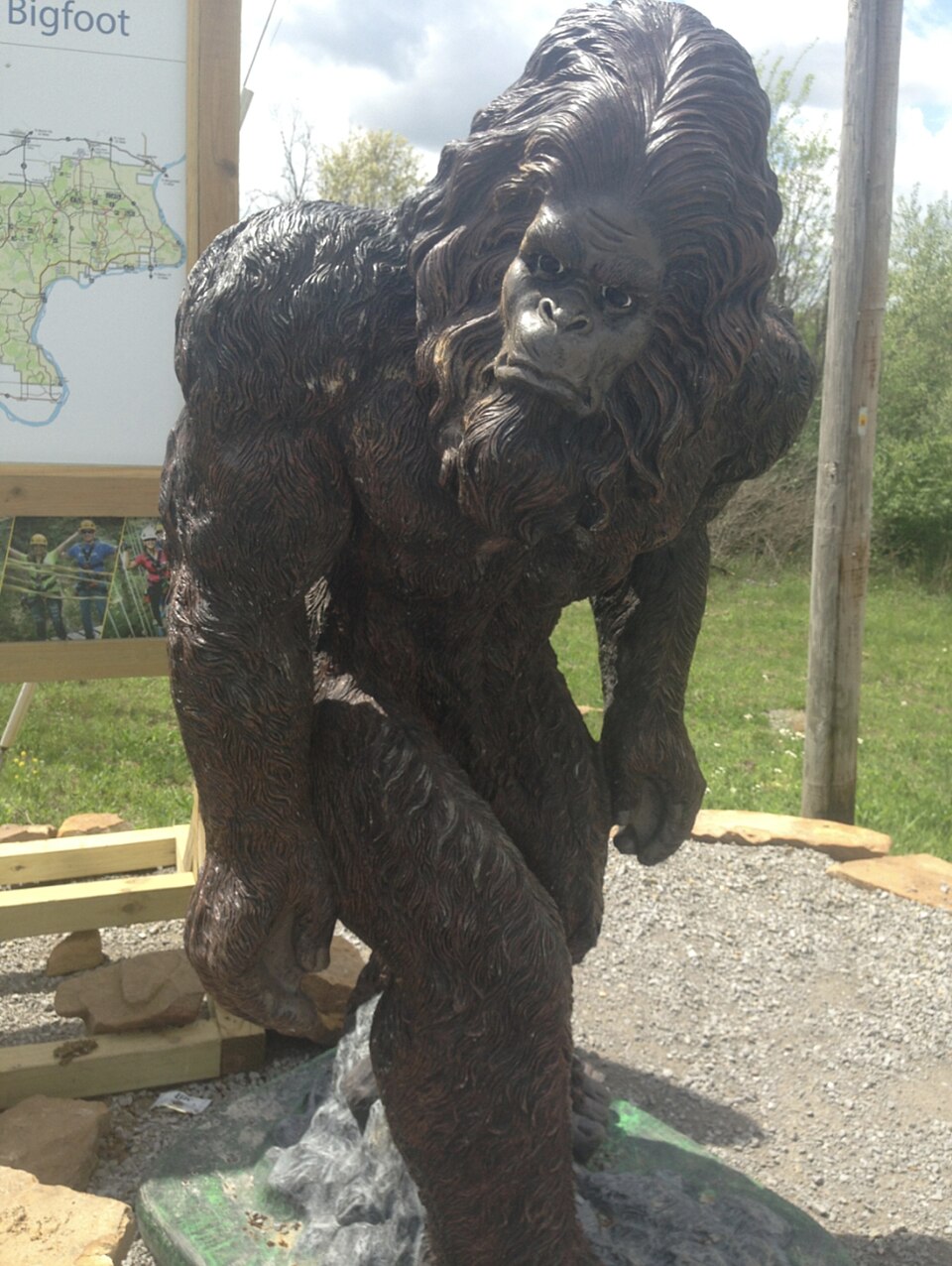
Hundreds of Bigfoot reports feature a tall, dark figure walking on two legs. Black bears can rise upright for short bursts, reach 6 to 7 feet when standing, and leave human-like rear footprints when front and back tracks overlap. Misread tracks, hoaxed prints, and long distance views boost the myth. Hair samples tested from alleged sightings usually match bear, deer, or cow. In logging regions, heat shimmer, brush, and bulky coats can make a standing bear look like a broad-shouldered walker. Trail cams mostly record bears, deer, or people, not unknown apes.
2. Skunk Ape – Florida black bear
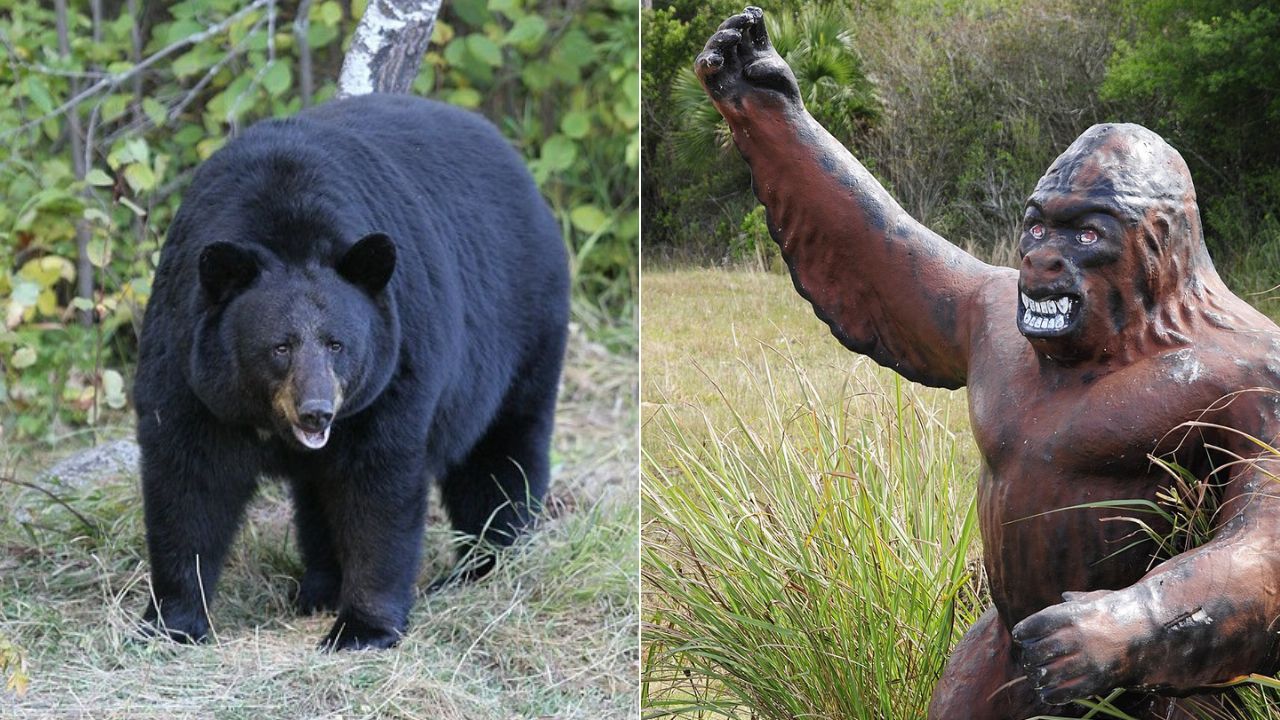
Florida’s Skunk Ape legend describes a foul smell and a shaggy biped in swamps. Black bears live across the state, often near dumpsters and boardwalks, and adult males can top 300 pounds. Wet fur, stagnant ponds, and decaying algae create strong odors that match the name. Mangy bears lose patches of hair that expose pink skin, which looks oddly human at a glance. Muddy footprints spread at the toes as they lift, creating long shapes that read as giant human prints to startled hikers on narrow trails.
3. Mothman – sandhill crane or owl
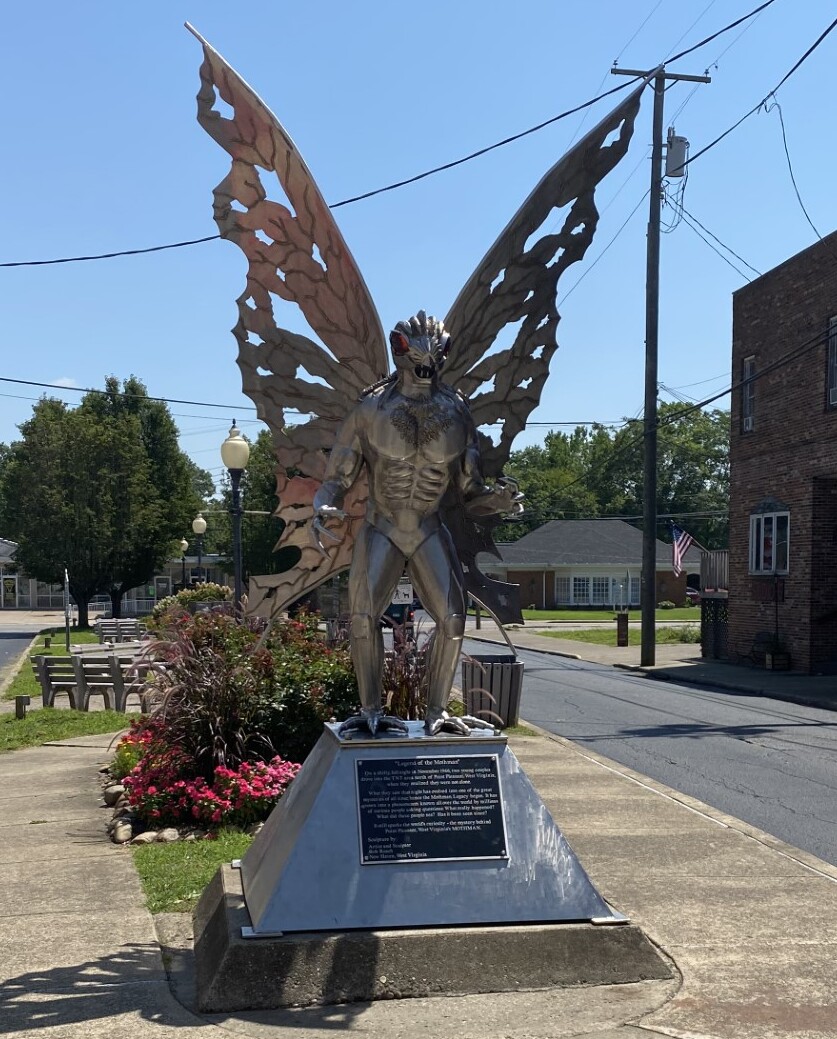
Reports in 1966 and 1967 told of a man-sized flyer with glowing red eyes near Point Pleasant. Sandhill cranes stand 3.5 to 4.5 feet, span about 7 feet, and have a red facial patch that reflects headlights. Great horned and barred owls also reflect red or orange at night, and their silent flight can startle drivers on bridges. Wind, fog, and streetlights cast moving shadows that enlarge silhouettes. The later Silver Bridge collapse locked the legend in local memory, but the bird facts still fit the descriptions.
4. Jersey Devil – misidentified birds
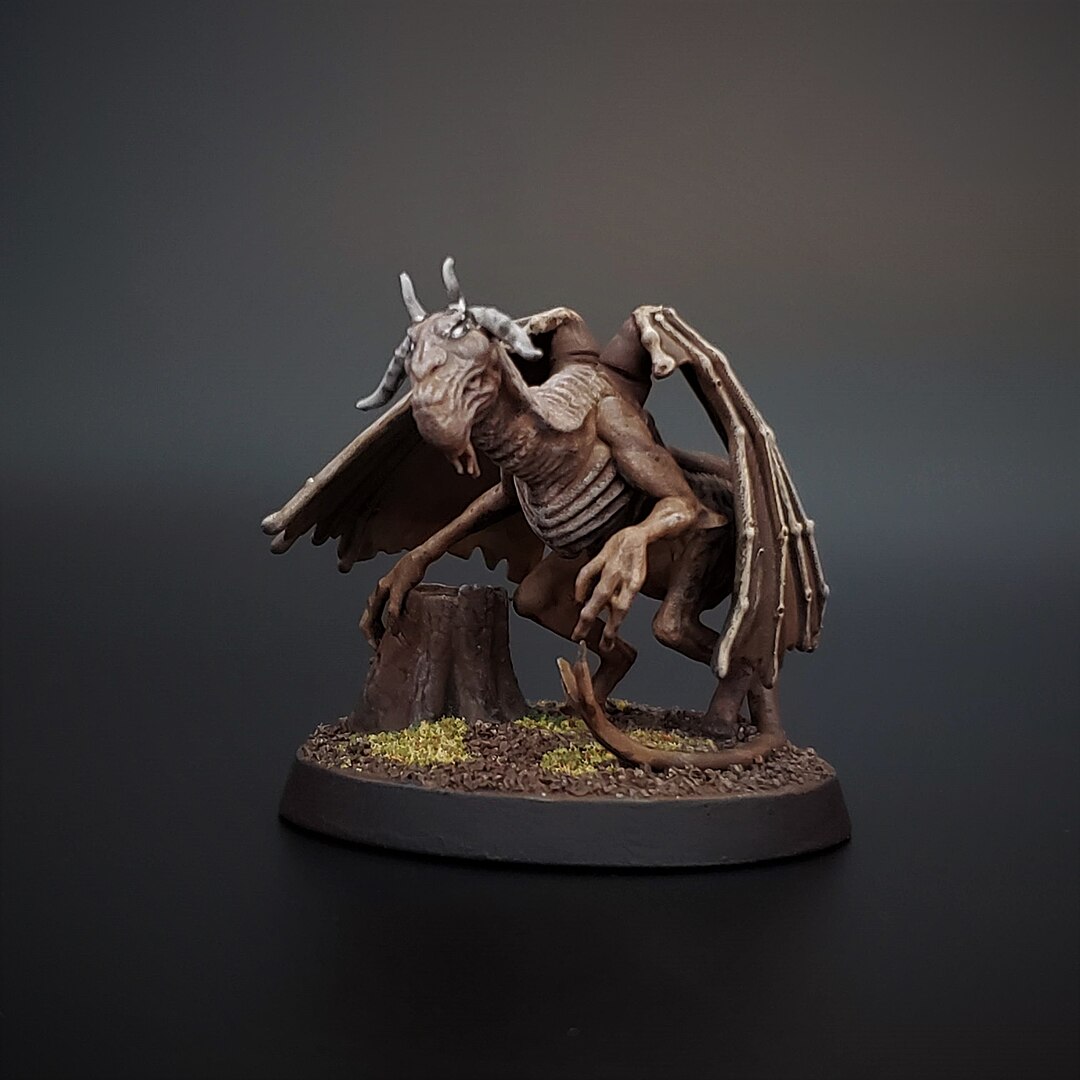
New Jersey’s Pine Barrens monster gained fame during a 1909 burst of newspaper reports. Large night birds explain many details. Great horned owls hiss, scream, and carry prey, which can look like hooves in dim light. Sandhill cranes migrate through with six to seven foot wingspans and long legs that trail behind. Hoof prints in sand were often wagon or horse marks already on the road. Carnival hoaxes and taxidermy gaffs later traveled the coast, blending marketing with misidentification to keep the story alive.
5. Thunderbirds – giant raptors
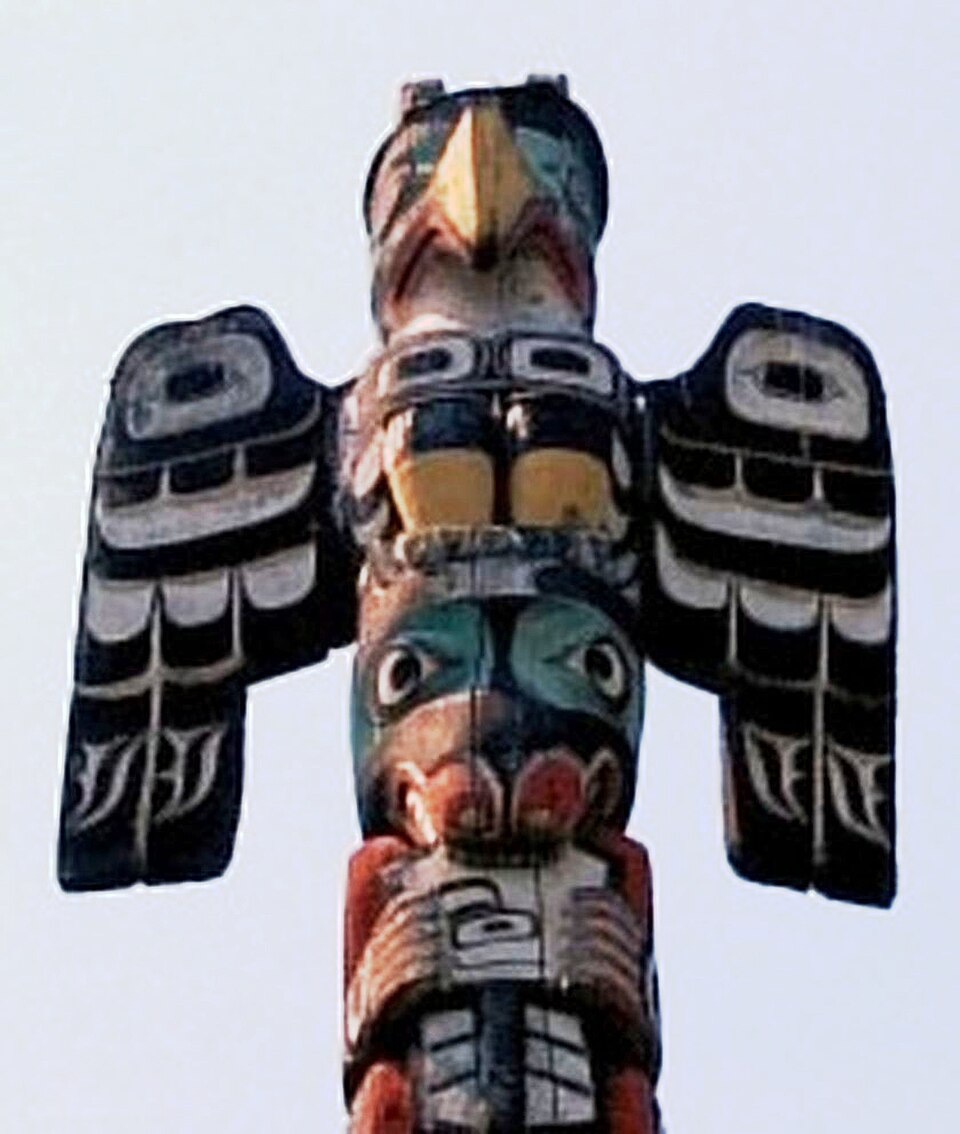
Stories of huge birds that lift deer mix culture, storms, and real raptors. Golden and bald eagles span six to seven and a half feet and may snatch rabbits or fox kits, which looks dramatic at distance. The California condor reaches about nine and a half feet across, and soaring lines flatten depth cues so high birds seem closer and larger. Gust fronts before thunderstorms create sudden lift that sends big birds spiraling. From below, the sight matches thunder myths far better than a mystery species.
6. Chupacabra – canids with mange
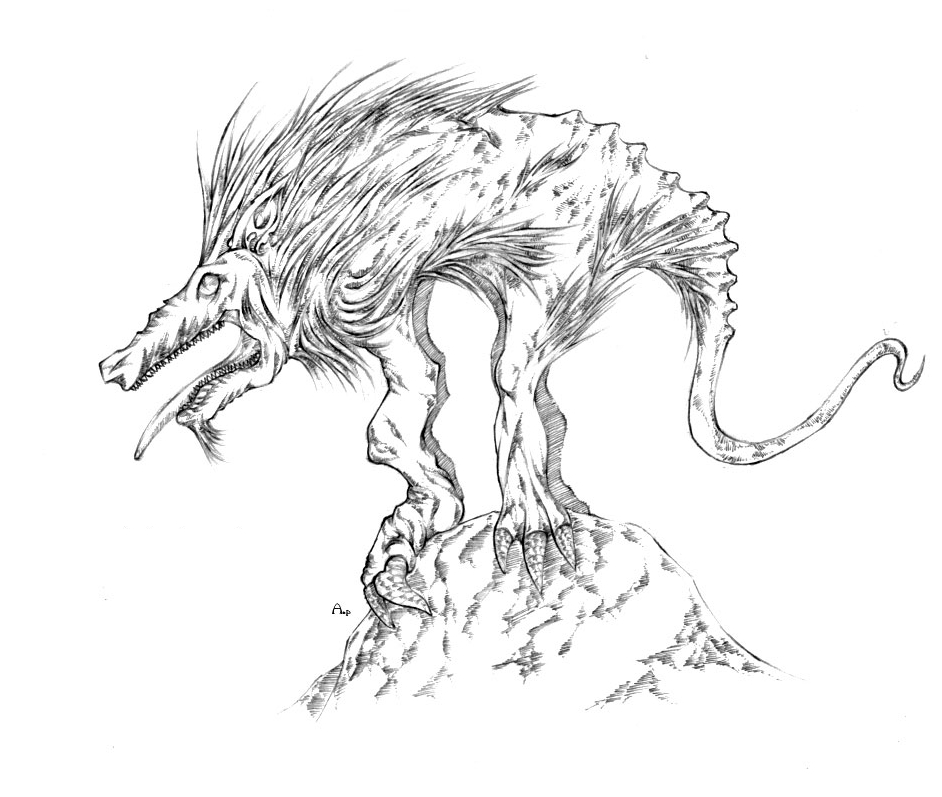
U.S. reports of hairless, long-snouted goatsuckers surged in the 1990s. Wildlife lab tests on carcasses often identified coyotes, foxes, or dogs with sarcoptic mange, a mite that strips hair and thickens skin. Sick canids raid coops and small livestock because they are easier to catch, and dried blood around bite marks suggests drained animals even when internal blood remains. Stiff gait from illness and harsh farm lights complete the eerie look. DNA checks typically point to ordinary canids rather than an unknown predator.
7. Jackalope – rabbits with horns
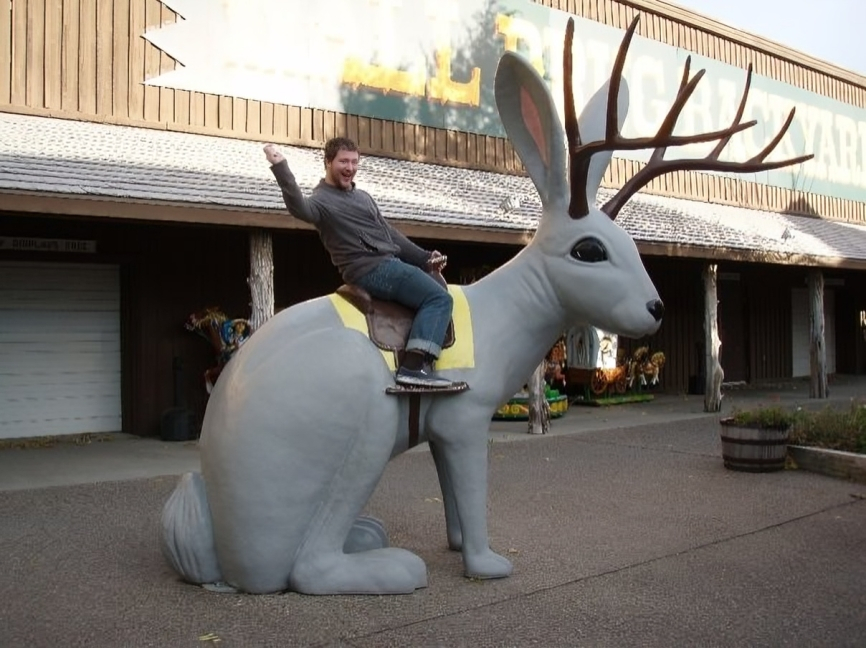
The jackalope began as a Wyoming taxidermy joke, yet nature adds a twist. Cottontails infected with Shope papillomavirus can grow hard, horn-like keratin growths around the head and mouth. From the side, the spiky masses look like antlers. Western shops sold mounted “jackalopes” by grafting pronghorn antlers onto rabbit skins, and postcards spread the legend. Real biology explains why the idea stuck. Virus growths can block eating, so affected rabbits linger near roads and yards where people notice the odd shapes.
8. Champ of Lake Champlain – sturgeon

People on Lake Champlain have reported a serpent-like Champ for centuries. The lake holds lake sturgeon that can exceed seven feet and two hundred pounds, with ridged backs that break the surface like rows of humps. Sturgeon roll to gulp air and spawn in spring, which looks serpentine in choppy water. Boat wakes, floating logs, and a mirage called superior refraction stretch and join distant shapes. When wind stacks waves, one fish can look like a long, many-humped creature moving fast across the bay.
9. Beast of Bray Road – canid mix-ups

Wisconsin’s wolf-man reports from the late 1980s often mention a tall, shaggy shape crossing roads at night. Coyotes, wolves, and large wolf-dog hybrids stand taller than many expect, especially with hackles raised. Low beams create green or yellow eye shine. A quartering dog looks chest-forward like a person, but clearer video usually shows a canid gait with hocks and tail. Black bears also travel farm edges after dark. Misjudged distance at night turns a normal predator into something oversized and upright.
10. Lizard Man – alligator on land
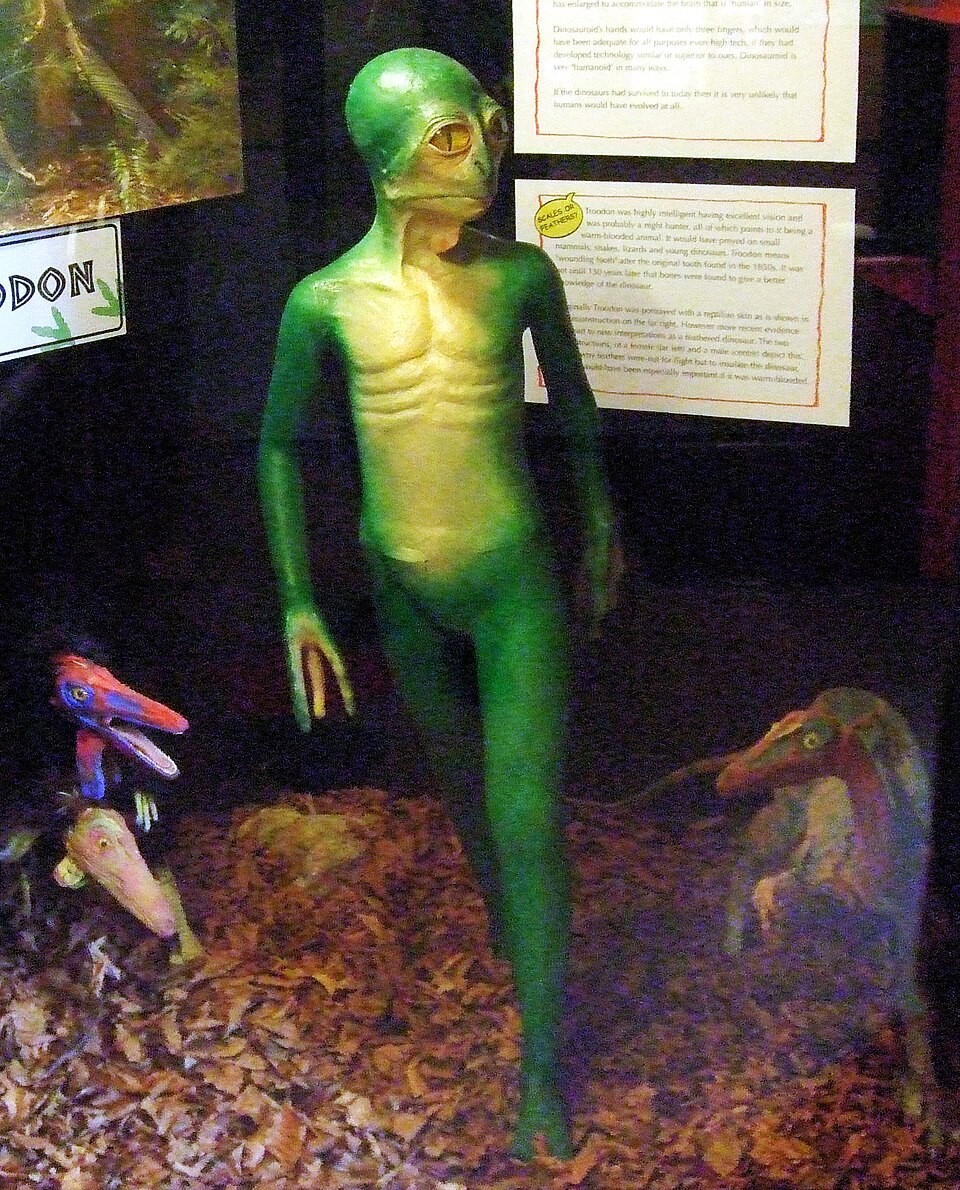
South Carolina’s Lizard Man tales describe a scaled, heavy creature near Scape Ore Swamp. American alligators can exceed eleven feet and sometimes cross roads at night to reach warm ditches. Wet scales reflect headlights like armor. At a distance, an alligator high-walking on stiff legs looks upright between strides, and tail sways suggest a long body. Torn bumpers, claw marks, and tracks near water match gators more than fantasy reptiles. Warm, rainy nights increase road crossings and surprise drivers who are not expecting a big reptile.
